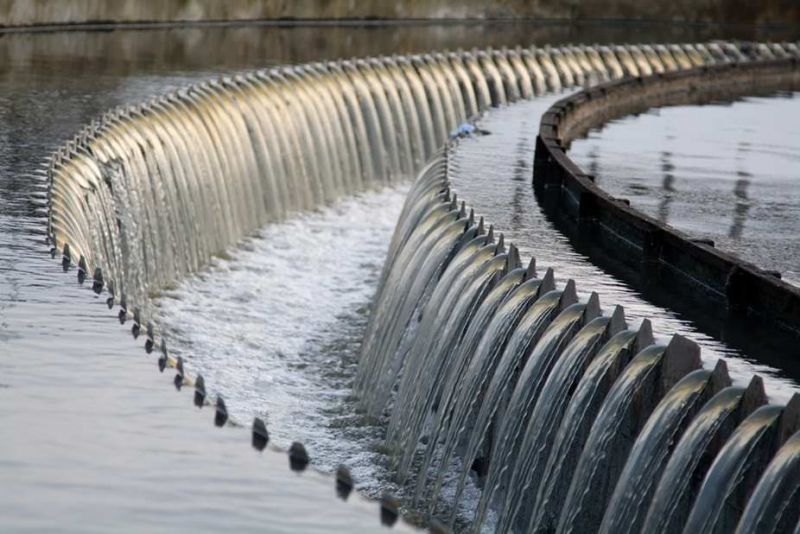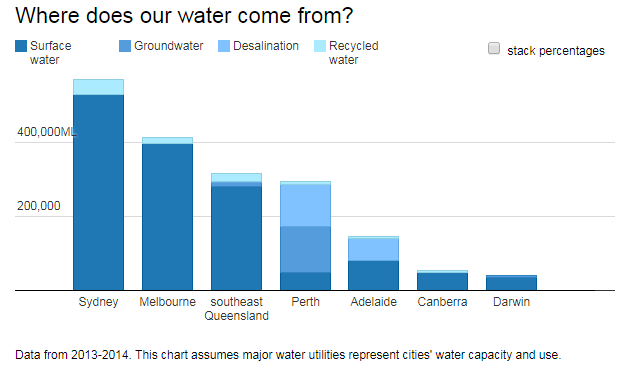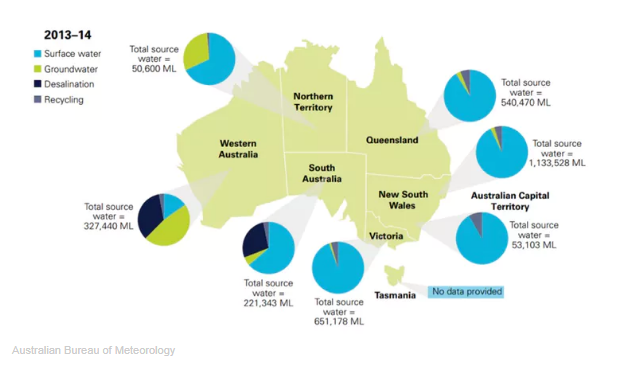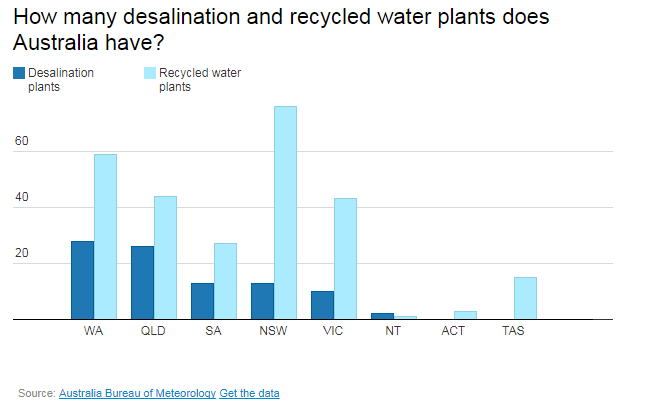The Role of Water in Australia's Uncertain Future
Published on by Shauna McGee Kinney, Business Plan Writer at Axito Pty Ltd in Business
Where do Australian private industries and governments need to align with water use? Amgad Elmahdi illustrates how the capital cities in Australia are using (and reusing) their water.

If you live in an Australian city, there’s a good chance that your water comes from surface water such as streams, rivers and reservoirs filled by rainfall and runoff. If you live in Perth, much of your water (about 40%) comes from groundwater.
But you might be surprised to know that a sizeable proportion of water in Australia came from recycling or desalination in 2013-14.
39% of Perth’s water came from desalination and 41% of Adelaide’s. All cities also used small portions of recycled water: Melbourne (4%), Sydney (7%), southeast Queensland (7%), and Canberra (8%).
The Bureau of Meteorology recently released, for the first time, comprehensive national data on these “climate-resilient” water sources, through a new online portal provided as part of the Bureau’s Improving Water Information program.
Climate-resilient water sources are those on which climate variability, such as variations in rainfall, temperature and drought, has little or no influence. The data set provides information on two of the most significant such sources: desalination and water recycling.
So how do these sources fit into the bigger picture of water in Australia?



Read full article: The Conversation
Media
Taxonomy
- Treatment
- Governance
- Resource Management
- Water Resource Management
- Water Supply
- Integrated Water Management
- Water Supply
- Water Management
- Water Resource Management
1 Comment
-
Australia has more water than they could ever need. Their biggest problem is not using what they have. The create government programs and tax the hell out their citizens for multi $ Billion desalination plants. Rich get richer. Farmers loose their farms and now have the highest suicide rate in the world. Thanks to Google Earth I took a drive on Queens Hwy #1. ALL of it. Looked at city residential homes and stores. Country farms and more. First observation. almost no rainwater collection devices. No organic waste material being composted, little to no "Victory gardens". Hundreds of natural springs to the west.(not being used.) Great water basin to the east being drained rapidly. Massive rainfall even in their red desert. But no organic material in the soil to hold the moisture. The reversal of the expanding desert and reestablishing fertile soil for the farmers is simple and no cost to the government. But nothing is being done. If any farmers want their land back and make it extremely profitable just get in contact with me. skype: guy_mcgowen